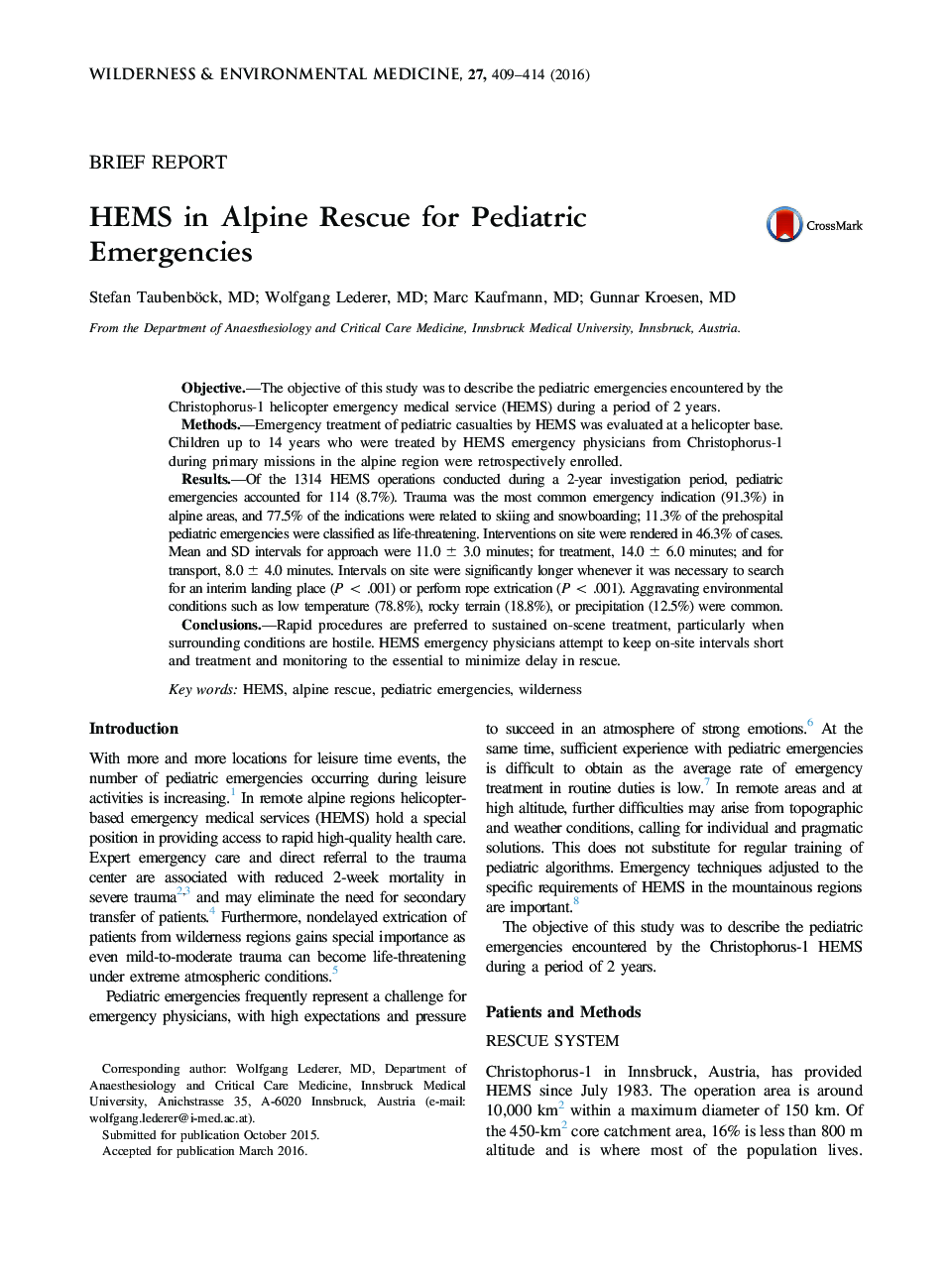| Article ID | Journal | Published Year | Pages | File Type |
|---|---|---|---|---|
| 2614500 | Wilderness & Environmental Medicine | 2016 | 6 Pages |
ObjectiveThe objective of this study was to describe the pediatric emergencies encountered by the Christophorus-1 helicopter emergency medical service (HEMS) during a period of 2 years.MethodsEmergency treatment of pediatric casualties by HEMS was evaluated at a helicopter base. Children up to 14 years who were treated by HEMS emergency physicians from Christophorus-1 during primary missions in the alpine region were retrospectively enrolled.ResultsOf the 1314 HEMS operations conducted during a 2-year investigation period, pediatric emergencies accounted for 114 (8.7%). Trauma was the most common emergency indication (91.3%) in alpine areas, and 77.5% of the indications were related to skiing and snowboarding; 11.3% of the prehospital pediatric emergencies were classified as life-threatening. Interventions on site were rendered in 46.3% of cases. Mean and SD intervals for approach were 11.0 ± 3.0 minutes; for treatment, 14.0 ± 6.0 minutes; and for transport, 8.0 ± 4.0 minutes. Intervals on site were significantly longer whenever it was necessary to search for an interim landing place (P < .001) or perform rope extrication (P < .001). Aggravating environmental conditions such as low temperature (78.8%), rocky terrain (18.8%), or precipitation (12.5%) were common.ConclusionsRapid procedures are preferred to sustained on-scene treatment, particularly when surrounding conditions are hostile. HEMS emergency physicians attempt to keep on-site intervals short and treatment and monitoring to the essential to minimize delay in rescue.
